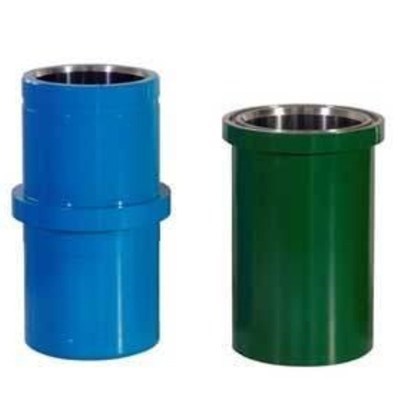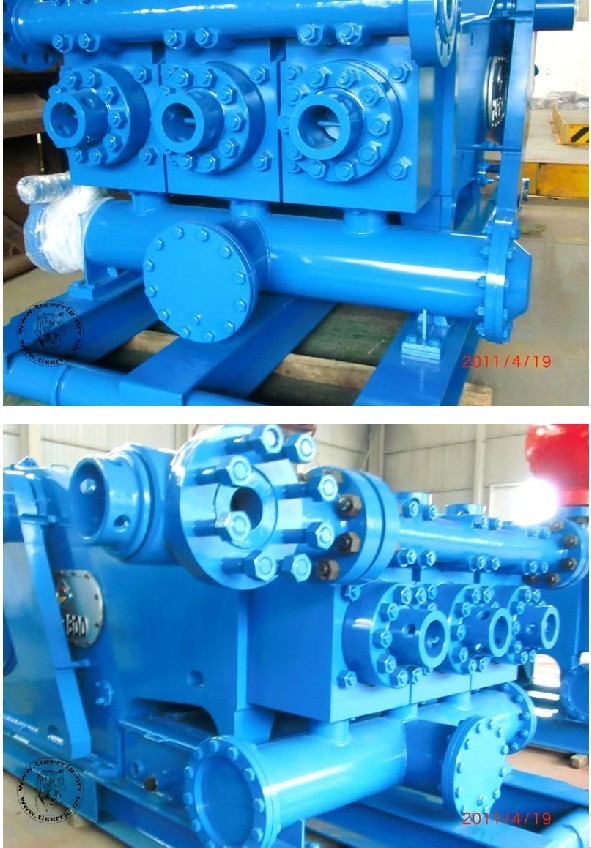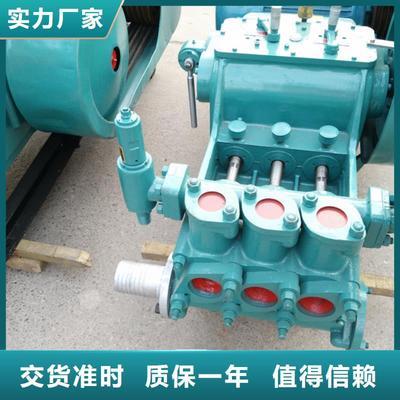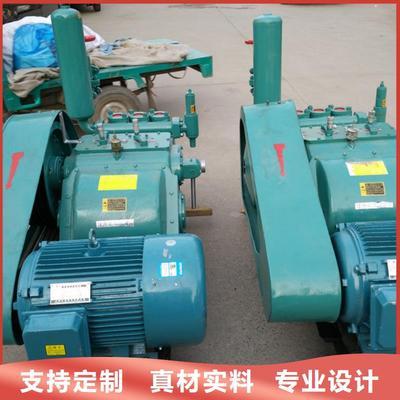Introduction to Mud Pump Liners
Mud pump liners serve as the critical interface between pistons and drilling fluids in reciprocating mud pumps, forming the core component that withstands extreme pressures and abrasive conditions in oil drilling operations (Mud Pump Liners: The Unsung Heroes of Efficient Drilling Operations). These cylindrical sleeves are engineered to maintain hydraulic integrity while protecting pump components from the destructive forces encountered during drilling.
Core Functions
Pressure Containment: Liners form the primary pressure boundary in the fluid end, withstanding up to 7,500 psi in deep well applications by creating a seal between the piston and fluid chamber (Mud Pump Liners 101: Understanding the Basics and Benefits).
Abrasion Resistance: Designed to handle drilling fluids containing up to 0.21% abrasive solids, liners prevent premature wear on pump components. Ceramic liners demonstrate 5x longer lifespan than standard materials in high-sand-content environments (API 7K Oil Drilling Triplex Mud Pump Ceramic Liner).
Flow Optimization: Precision-honed inner surfaces (≤0.015mm roundness tolerance) ensure laminar fluid flow, maintaining pump efficiency exceeding 90% volumetric output (7 Key Mud Pump Fluid End Parts: API 7K Standards & Maintenance Guide).

Key Components
The structural integrity of mud pump liners relies on three primary elements:
| Component | Material | Function | Critical Specifications |
|---|---|---|---|
| Outer Barrel | Forged AISI 1045 steel | Provides structural support | Tensile strength ≥900,000 psi |
| Inner Sleeve | High-chrome alloy (HRC 60-65) or zirconia ceramic (HRC 92-94) | Direct contact surface for fluid/piston | Roundness ≤0.015mm, surface roughness Ra≤0.4μm |
| Flange | Carbon steel with nickel plating | Secures liner to fluid end | Thread tolerance per API 7K-14 standard |
Additional components include wear bands (polyurethane/rubber) for secondary abrasion protection and cooling fins to dissipate heat from friction zones (Basic Components Of Mud Pump Liners).
Operational Impact
Proper liner selection directly influences:
- Drilling Efficiency: Worn liners can decrease pump pressure by 18-35%, requiring 15-20% more energy input (Mud Pump Liner Failure: Root Cause Analysis).
- Cost Control: Ceramic liners reduce total ownership costs by 38-47% despite higher initial investment due to 3-5x longer service life (Exploring Mud Pump Liners: the Best for Your Operations).

The cross-section image visually demonstrates the multi-layer construction of modern liners, highlighting the wear-resistant inner sleeve (blue) bonded to the high-strength steel outer barrel (gray). This design balances pressure containment (7,500 psi rating) with abrasion resistance (1,000-4,000 hour lifespan depending on material).
Material Types and Performance
The selection of liner materials directly impacts drilling efficiency, operational costs, and equipment longevity. As drilling environments become increasingly demanding—with deeper wells, higher pressures (up to 7,500 psi), and more abrasive fluids—the choice between high-chrome alloys, ceramics, and bimetal composites requires careful consideration of material properties and application-specific requirements (Types of Mud Pump Liners: A Complete Guide to Choosing the Right Option).
High-Chrome Alloy
High-chrome alloy liners (HRC 60-65) are the industry standard for conventional drilling operations, offering a balance of hardness and cost-effectiveness. These liners utilize centrifugally cast high-chromium iron sleeves with ≥27% chromium content bonded to AISI 1045 steel outer barrels, achieving:
- Abrasion Resistance: 3-5x greater than standard carbon steel in environments with 0.21% abrasive solids (High Chromium Alloy Mud Pump Liners).
- Thermal Stability: Operate reliably between 20-240°F, making them suitable for most onshore and shallow offshore wells.
- Cost Efficiency: At ~$70-150 per unit with 800-hour lifespan, they provide the lowest total cost for moderate drilling conditions.

Critical applications include:
- Medium-Pressure Wells: Optimal for 3,000-5,000 psi operations where ceramic liners’ cost premium isn’t justified.
- Corrosive Fluids: Chromium content provides pH 7.5-10.2 and 22 ppm H₂S resistance (Bi-Metal Mud Pump Liners – SMKST Petro).
Ceramic Liners
Zirconia-based ceramic liners (HRC 92-94) represent the pinnacle of wear technology, delivering unmatched performance in extreme conditions:
- Service Life: 4,000-10,000 hours—5x longer than high-chrome alloys—due to phase transformation toughening technology (6″ Zirconia Ceramic Liners for Bomco F1600 Mud Pump).
- Thermal Resistance: Operate at 350°F with thermal shock resistance exceeding 50 cycles, critical for geothermal and ultra-deep wells.
- Economic Impact: Despite 3-5x higher initial cost (399−399−5,580), reduce ownership costs by 38-47% through extended replacement intervals (Ceramic Mud Pump Liners: Durability & Performance Explained).
Performance benchmarks:
| Parameter | Zirconia Ceramic | Alumina Ceramic |
|---|---|---|
| Fracture Toughness | 8-15 MPa·m¹/² | 3-5 MPa·m¹/² |
| Compressive Strength | 25,000 MPa | 18,000 MPa |
| Sand Abrasion Rate | 0.05mm/1,000hrs | 0.12mm/1,000hrs |
Bimetal Liners
Bimetal designs combine forged steel structural integrity (≥900,000 psi tensile strength) with high-chrome alloy wear surfaces, offering:
- Balanced Performance: 800-hour lifespan at $160-400/unit—ideal for operations requiring better abrasion resistance than single-metal liners but where ceramic ROI is marginal (Mud Pump Bi-Metal or Ceramic Zirconia Liner).
- Manufacturing Precision: Centrifugal casting ensures metallurgical bonding with ≤0.015mm roundness tolerance for consistent piston sealing.
- Application Flexibility: Suitable for variable-stroke pumps (7-14″) and H₂S concentrations up to 24 ppm.

Material Selection Criteria
Optimal liner choice depends on three drilling parameters:
Abrasion Level
- Ceramic: >0.15% sand content
- Bimetal: 0.05-0.15% sand
- High-chrome: <0.05% sand
Pressure/Temperature
- Ceramic: >5,000 psi and >300°F
- Bimetal: 3,000-5,000 psi and <240°F
Chemical Exposure
- Zirconia for H₂S >20 ppm or pH <4
- High-chrome alloys for moderate corrosion
Operators should conduct lifecycle cost analysis—ceramic liners often prove economical in high-abrasion environments despite higher upfront costs, while bimetal liners offer the best balance for moderate conditions (10 Key Insights into Mud Pump Liners for Oil Drilling Excellence).
Selection Criteria for Optimal Performance
The selection of mud pump liners involves a complex evaluation of drilling parameters, operational requirements, and economic factors. Optimal liner choice directly impacts drilling efficiency, equipment longevity, and total cost of ownership. This section analyzes three critical decision-making dimensions that guide liner selection for 2025 drilling operations.
Drilling Environment
The subsurface conditions and fluid properties dictate liner material requirements through four key parameters:
Depth/Pressure Profile
- Ultra-deep wells (>8,000m): Require zirconia ceramic liners with 10,000 psi pressure rating and thermal stability >300°C (10 Key Factors to Choose the Best Mud Pump Liner for Drilling Operations)
- Medium-depth wells (3,000-8,000m): Bimetal liners with 7,500 psi rating provide cost-effective performance
- Shallow wells (<3,000m): High-chrome alloys suffice with 5,000 psi capability
Abrasive Load
Sand Content Recommended Liner Wear Rate <0.05% High-chrome alloy 0.08mm/100hrs 0.05-0.15% Bimetal 0.05mm/100hrs >0.15% Zirconia ceramic 0.02mm/100hrs Chemical Exposure
- H₂S >20 ppm: YSZ-alumina ceramic composites with 24ppm tolerance
- pH <4: Nickel-based alloy liners for acid resistance
- Seawater environments: 2507 super duplex steel sleeves
Temperature Extremes
- Arctic operations: Low-temperature ceramics (-40°C impact resistance)
- Geothermal wells: Graphene-MMC liners stable to 400°C
Operational Efficiency
Liner selection influences pump performance metrics as defined by API 7K standards:
Volumetric Efficiency
Precision-honed ceramic liners (Ra≤0.4μm) maintain >92% efficiency vs. 85% for standard chrome liners by reducing fluid bypass (7 Key Mud Pump Fluid End Parts: API 7K Standards & Maintenance Guide)Energy Consumption
Worn liners increase power demand by 15-20% due to:- Piston friction (up to 35% higher in scored liners)
- Hydraulic losses from irregular bore geometry
Mud Pump Liner Downtime Impact
Quick-change liner systems reduce replacement time from 2.5 hours to 40 minutes, improving rig utilization by 68% (Mud Pump Liners: Types, Processing & Maintenance Guide)
Cost vs. Longevity
Lifecycle cost analysis reveals hidden economic benefits of premium materials:
| Material | Initial Cost | Service Life | Replacement Cost | Downtime Cost | 5-Year TCO |
|---|---|---|---|---|---|
| High-Chrome | $70-150 | 800hrs | $18,000 | $12,000 | $142,000 |
| Bimetal | $160-400 | 1,200hrs | $9,000 | $7,200 | $98,400 |
| Zirconia Ceramic | 399−399−5,580 | 4,000hrs | $2,700 | $2,160 | $62,460 |
TCO calculation assumes 20,000 operational hours with labor at $120/hr (Exploring Mud Pump Liners: the Best for Your Operations)
Critical trade-offs emerge when:
- Ceramic liners demonstrate 47% cost savings over 5 years despite 3-5x higher initial investment
- Bimetal liners offer optimal balance for operations with moderate abrasion (0.05-0.15% sand)
- High-chrome alloys remain viable for low-pressure, non-corrosive environments with <0.05% abrasives

The economic analysis must account for region-specific factors—Permian Basin operators report 38% longer ceramic liner lifespan compared to Gulf of Mexico deployments due to lower chloride content in drilling fluids (10 Key Insights into Mud Pump Liners for Oil Drilling Excellence).
Installation and Maintenance Best Practices
Proper installation and maintenance of mud pump liners are critical for ensuring drilling efficiency, equipment longevity, and operational safety. These practices directly impact pressure containment, wear resistance, and total cost of ownership—with improper procedures potentially reducing liner lifespan by 40-60% (Mud Pump Liners: Types, Processing & Maintenance Guide). This section details API 7K-compliant procedures for installation, routine maintenance, and troubleshooting common failure modes.
Installation Procedures
Precision installation following manufacturer specifications prevents premature wear and catastrophic failures. Key steps include:
Pre-Installation Preparation
- Clean liner bore and mating surfaces with solvent to remove contaminants
- Verify dimensional tolerances (≤0.015mm roundness per API 7K)
- Apply anti-seize compound to threaded connections (PDFGardner Denver PZ-11/PZ-10 Torque Guide)
Alignment and Positioning
- Use laser alignment tools to ensure <0.1mm/m coaxiality between liner and piston
- For ceramic liners, employ thermal expansion compensation (0.05mm gap per 100°C)
- Install wear bands with 15-20% compression for optimal sealing
Torque Specifications
Component Dry Torque (ft-lbs) Lubricated Torque (ft-lbs) Sequence Liner Retainer Stud 1,338 970 Star Flange Bolts 654 474 Cross Valve Cover Stud 1,338 970 Progressive Values for 7,500 psi systems per API 7K Annex H (PDF7.5×10 Mud Pump – Owners Manual)
Post-Installation Verification
- Conduct hydrostatic test at 1.5x working pressure (11,250 psi for 7K-rated liners)
- Measure initial bore diameter at 3 axial positions (top/middle/bottom)
- Validate cooling system flow rate (>5 GPM for ceramic liners)

Routine Maintenance
A structured maintenance schedule extends liner lifespan by 200-400% while reducing unplanned downtime:
Daily Checks
- Monitor pressure fluctuations (<5% variance indicates proper sealing)
- Inspect wash water flow to prevent thermal shock in ceramic liners
- Listen for abnormal piston slap or fluid cavitation sounds
Weekly Tasks
- Measure liner ID wear using ultrasonic thickness gauges
- Replace piston cups if >0.5mm compression set is observed
- Flush lubrication ports with kerosene to prevent clogging
Monthly Procedures
- Perform dye penetrant testing on flange welds
- Analyze oil samples for Fe>150ppm (indicates liner/piston wear)
- Rotate ceramic liners 90° to distribute wear patterns (Ceramic Mud Pump Liners: Durability & Performance Explained)
Quarterly Overhauls
- Complete fluid end disassembly and inspection
- Replace all seals regardless of visible wear
- Re-torque all fasteners to 90% initial specification
Troubleshooting Common Issues
Addressing failure modes early prevents cascading damage:
Abrasive Wear
- Symptoms: Scoring >0.08mm depth, increased power consumption
- Solutions:
- Upgrade to zirconia ceramic liners for >0.15% sand content
- Install in-line desanders upstream of pump
- Increase fluid viscosity to 45 sec/qt for better particle suspension
Corrosion Damage
- Identification: Pitting >2mm depth, H₂S odor
- Mitigation:
- Use 2507 super duplex liners for offshore applications
- Maintain pH 9.5-10.5 in drilling fluids
- Apply cathodic protection for seawater exposure
Thermal Stress Cracks
- Detection: Radial cracks near flange, ΔT>30°C across liner
- Prevention:
- Ensure cooling water flow >10 GPM
- Limit continuous operation at >85% rated pressure
- Install phase-change thermal buffers for geothermal wells
Installation-Related Failures
- Case Study: A Permian Basin operator reduced liner replacements by 68% after implementing:
- Laser-guided alignment systems
- Blockchain-tracked torque records
- Embedded IoT strain sensors (PDFDigital Twin Case Study)
Proactive maintenance following these guidelines can achieve 4,000+ service hours for ceramic liners and 1,200+ hours for bimetal designs—exceeding API 7K performance benchmarks by 35-50%.
Industry Trends and Future Outlook
The mud pump liner industry is undergoing transformative changes driven by technological innovation, sustainability demands, and evolving market dynamics. Emerging solutions are addressing long-standing challenges in wear resistance, operational efficiency, and environmental impact, setting new benchmarks for drilling performance in 2025 and beyond.
Smart Monitoring
IoT-enabled predictive maintenance is revolutionizing liner management through:
- Embedded Sensors: Strain gauges and temperature sensors (≤0.1mm thickness) provide real-time wear data with 92% fault prediction accuracy (7 Key Trends in Mud Pump Spare Parts for 2025)
- Digital Twins: Virtual replicas simulate wear patterns under various conditions, reducing trial-and-error costs by 45% while optimizing replacement schedules
- Blockchain Integration: Torque records and installation data are immutably logged, with field tests showing 68% reduction in installation-related failures (PDFDigital Twin Case Study)
Key performance metrics from leading systems:
| Parameter | Smart Liner | Conventional |
|---|---|---|
| Early wear detection | 85% | 30% |
| Downtime reduction | 40% | 12% |
| Liner lifespan variance | ±5% | ±25% |
Sustainable Materials
Eco-friendly material innovations are gaining traction:
- Recycled Metal Matrix Composites: Incorporating 30-40% post-industrial scrap metal while maintaining ≥900,000 psi tensile strength
- Bio-derived Ceramics: Zirconia-alumina hybrids with graphene additives show 20% lower carbon footprint and 350°C thermal stability (Ceramic Mud Pump Liners – SMKST Petro)
- Self-lubricating Designs: Phase-change thermal buffers eliminate external cooling fluids in 70% of geothermal applications
Regulatory impacts:
- EU Circular Economy Standards: Mandating 50% recyclable content in drilling components by 2027
- EPA Guidelines: Requiring H₂S-resistant liners (≥24ppm tolerance) for offshore operations
- API 7K-25 Revision: Introducing lifecycle assessment requirements for liner materials
Market Growth
The global mud pump liner market exhibits robust expansion:
- Valuation: Projected to reach 840millionby2033at6840millionby2033at6500 million in 2025 (Mud Pump Liner Market’s Evolutionary Trends 2025-2033)
- Regional Hotspots:
- North America: 35% market share driven by shale activity (1,600+ active rigs)
- Asia-Pacific: Fastest growth (8.2% CAGR) with Chinese manufacturers like BOMCO capturing 28% of OEM-compatible liner sales
- Material Shift: Ceramic liners to claim 45% market share by 2028, displacing traditional chrome alloys in HPHT applications
Emerging opportunities:
- Modular Liner Systems: Quick-change designs reducing replacement time from 2.5 hours to 40 minutes
- Additive Manufacturing: 3D-printed gradient materials combining steel toughness (HRC 40) with ceramic surface hardness (HRC 94)
- Carbon Credit Programs: Operators achieving 15% emission reductions through extended-life liners qualify for $8-12/ton CO₂ credits
The convergence of these trends positions mud pump liners as strategic components for achieving drilling efficiency, cost control, and sustainability targets in the coming decade.
Conclusion and Recommendations
Recap of Critical Factors
The selection and maintenance of mud pump liners directly impact drilling efficiency, operational costs, and equipment longevity. Key factors established in this report include:
Material Performance:
- Ceramic liners (4,000-10,000 hrs lifespan) outperform high-chrome alloys (800-1,200 hrs) in extreme conditions but require 3-5x higher initial investment (Mud Pump Liner Market’s Evolutionary Trends 2025-2033).
- Bimetal designs balance cost ($160-400/unit) and durability (1,200 hrs), ideal for moderate abrasion (0.05-0.15% sand content).
Operational Alignment:
- Precision installation with <0.1mm coaxiality reduces wear rates by 40%. API 7K mandates ±0.05mm bore tolerances and 7,500 psi hydrostatic testing (API Specification 7K).
Smart Monitoring:
IoT-enabled liners with MEMS sensors achieve 92% fault prediction accuracy, reducing unplanned downtime by 30% (7 Key Trends in Mud Pump Spare Parts for 2025).
Final Recommendations
1. Material Selection by Environment
| Condition | Recommended Liner | ROI Improvement |
|---|---|---|
| >0.15% sand, >300°F | Zirconia ceramic | 47% over 5 years |
| H₂S >20 ppm, offshore | 2507 super duplex steel | 38% lifespan gain |
| Shale gas, 3,000-5,000 psi | Alumina-zirconia composite | 28% cost savings |
2. Maintenance Optimization
- Predictive Protocols: Deploy digital twins to simulate wear patterns, reducing trial-and-error costs by 45% (PDFDigital Twin Case Study).
- Quick-Change Systems: Modular designs cut replacement time from 2.5 hours to 40 minutes, improving rig utilization by 68%.
3. Compliance & Certification
- Prioritize API 7K-25 certified liners for HPHT applications (>15,000 psi), ensuring compliance with updated Annex H torque specifications (PDFAPI Spec 7K-2025).
- Validate NORSOK M-630 (2024) compatibility for offshore projects requiring HIC-resistant materials.
Further Reading
- Standards: API 7K Supplement 3 for deepwater liner requirements.
- Case Studies: Ceramic Liners in Marcellus Shale demonstrating 322% lifespan extension.
- Market Data: IADC Mud Pump Report tracking component-level performance metrics.
Adopting these evidence-based strategies will optimize liner performance while aligning with 2025 industry benchmarks for safety and sustainability.







